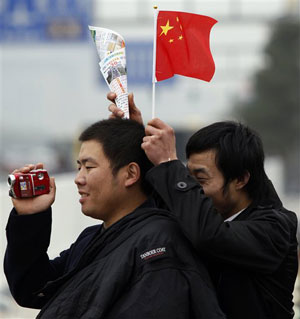East Asia Output Above Pre-Recession Levels
By wchung | 02 Nov, 2025
The World Bank raised its growth forecast for East Asia’s developing countries Tuesday but said governments need to control rising risks from surging capital inflows and currency strains.
Output has rebounded to above pre-crisis levels and regional growth should hit 8.9 percent this year, up from a previous forecast of 8.7 percent, the bank said. Last year’s expansion was 7.3 percent.
“The economic recovery in East Asia and the Pacific is robust, but attention must now turn to managing emerging risks which may pose challenges to macroeconomic stability,” the bank said in a twice-a-year outlook for the region’s economies, excluding Japan.
Asia’s rebound has attracted an influx of capital that is pushing up the value of some currencies, which might hurt exports. Some governments have intervened in foreign exchange markets to slow the rise of their currencies, raising fears of a potential “currency war” that might disrupt trade and growth.
The World Bank called for the region’s governments to work out a common approach.
“So far, export growth has remained robust, but with continued real appreciation of East Asian currencies this growth could slow,” the bank said.
Prospects for China “look bright” but Beijing must push ahead the rebalancing of its economy away from exports and investment to sustain its expansion, the bank said. It said China’s economy is expected to grow by 9.5 percent this year.
“Rebalancing the economy by altering the pattern of growth and investment is becoming increasingly critical to ensure sustainability — structurally, socially, and globally,” the report said.
The report also covers Indonesia, Malaysia, the Philippines, Thailand, Cambodia, Laos, Mongolia, Myanmar, Brunei, Papua New Guinea, Timor Leste, Vietnam, Hong Kong, South Korea, Singapore, Taiwan, the Solomon Islands and smaller Pacific island nations.
Regional economies need to cope with sharp price rises and possible strains to their financial systems from the influx of capital, the World Bank said.
Inflation is being driven by a rise in the cost of food and industrial materials, the report said. Price rises in China and Indonesia have exceeded targets and Thailand is warning of a similar danger there.
Rice prices were up 10 percent in August over a year ago due to poor harvests in Russia and supply disruptions in China and Pakistan, the bank said. Vegetable prices in Thailand were up 38 percent in July from a year earlier because of drought.
The dramatic rise in the flow of money into Asian banks might be passed through to borrowers, raising the threat of an increase in nonperforming loans and harm to banking systems, the World Bank said.
JOE McDONALD, AP Business Writer BEIJING

Chinese men take photos on the streets of Beijing, China on Tuesday, Oct. 19, 2010. (AP Photo/Ng Han Guan)
Asian American Success Stories
- The 130 Most Inspiring Asian Americans of All Time
- 12 Most Brilliant Asian Americans
- Greatest Asian American War Heroes
- Asian American Digital Pioneers
- New Asian American Imagemakers
- Asian American Innovators
- The 20 Most Inspiring Asian Sports Stars
- 5 Most Daring Asian Americans
- Surprising Superstars
- TV’s Hottest Asians
- 100 Greatest Asian American Entrepreneurs
- Asian American Wonder Women
- Greatest Asian American Rags-to-Riches Stories
- Notable Asian American Professionals

